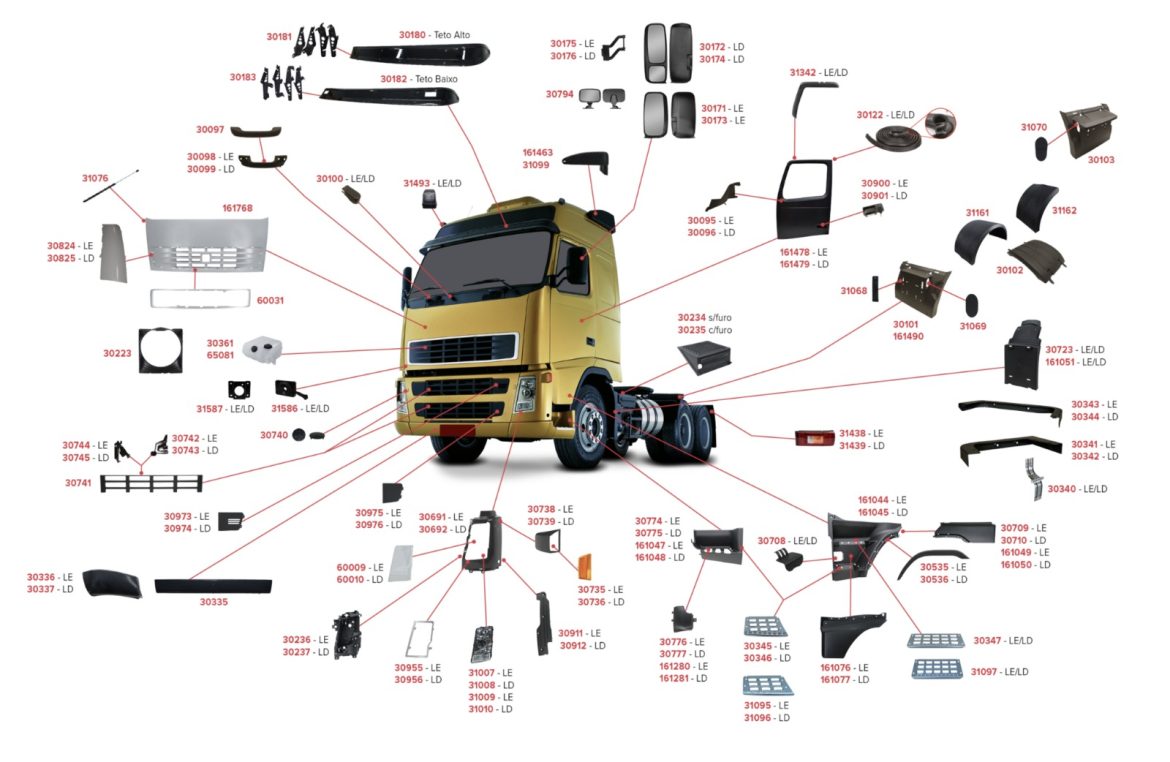He placed everything in order, perhaps alphabetically. So that nothing is left behind. He has had it on his list for years.
Of course, the number of items to carry has been growing. As the world becomes more complex, other accessories become necessary. So much has been invented that we depend on truly unthinkable gadgets. And it’s better to bring the ones we have at home than to acquire them on the road.
For the professional driver, preparing the vehicle before each route is an indispensable ritual that goes beyond mere legal compliance; it is a matter of personal safety, cargo protection, and responsibility towards other road users.
This commitment begins with knowing and verifying the mandatory safety devices specific to heavy vehicles. Two critical elements are the underrun protection device (rear underride guard) and the side guards or “cyclist savers.”
These systems are not mere bureaucratic formalities but are engineering designs meant to save lives, as they prevent light vehicles or vulnerable users like cyclists or motorcyclists from going under the truck’s chassis in the event of a collision, greatly mitigating the consequences of an accident.
Alongside these permanent devices, the driver must always ensure they carry the mandatory emergency equipment. This includes two warning triangles and a certified reflective vest (UNE EN 471).
In case of a breakdown or stop, placing the triangles at a sufficient distance (about 50 meters) and putting on the vest before exiting the vehicle are vital actions to become visible and avoid secondary accidents. Although not mandatory for all, carrying a certified fire extinguisher is an extremely prudent decision, as it can contain a small fire in the cabin or engine, protecting both the driver and the cargo.
Beyond what is stipulated by law, a cautious driver equips their vehicle with a series of recommended accessories that can resolve common unforeseen events.
A set of jumper cables, a powerful flashlight, and an anti-fog spray along with a cloth are simple but invaluable tools in low-visibility situations or electrical failures.
Likewise, for long trips, carrying water and non-perishable food not only contributes to the driver’s well-being, reducing fatigue, but also ensures they can stay hydrated and focused in case of unexpected delays.
The safety of the cargo is as crucial as personal safety. It is essential to perform proper loading and correct stowage, ensuring the weight is evenly distributed and the cargo is well secured to prevent movements that could destabilize the vehicle.
Investing in good restraint systems (straps, nets, padding) is essential. Before leaving, it must be verified that the covering tarp (if applicable) is well taut and secured to protect the cargo from bad weather and avoid damage.
Finally, documentary preparation is key. The driver must always carry all the vehicle and cargo documentation in order (registration certificate, insurance policy, technical inspection card, waybill, delivery notes, etc.).
Performing a pre-trip inspection (circle of safety) to check tires, brakes, lights, fluid levels, and the general condition of the vehicle is a non-negotiable practice that prevents breakdowns and ensures the journey begins under the best possible conditions.
In conclusion, the profession of truck driver entails enormous responsibility. Integrating strict compliance with regulations (safety devices, signage) with the foresight to carry useful accessories, meticulously securing the load, and maintaining a proactive attitude in vehicle maintenance forms the pillar of safe and efficient driving.
This comprehensive preparation not only avoids costly fines but is the best guarantee to protect the investment in the cargo and, most importantly, the life of the driver themselves and that of others.
Have any thoughts?
Share your reaction or leave a quick response — we’d love to hear what you think!





